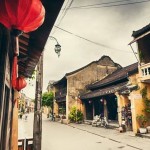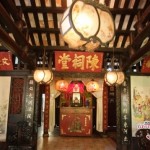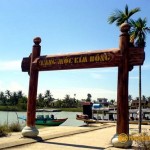The Museum of Trade Ceramics in Hoi An, located at 80 Tran Phu Street, was opened in 1975. The museum keeps the track record of the history and the origins of this port town.
The building that serves as museum itself is a very beautiful building constructed in the traditional Vietnamese architectural style. It is a two storey building with a courtyard and an anteroom – all of which are open to the public .Though the town of Hoi An is currently a fishing town, it once used to be a trade hub. Either way, the sea continues to play a major role in the life of the people of Hoi An. In the early days, when Hoi An was called Fai Fo, the chief article of trade to and from the town consisted mainly of pottery and, as such, pottery from different nations, including Chinese, Thai and Japanese, has been discovered .
There are about 430 ceramic artifacts that stand as testimony for the ceramic trade network dating back to the 8th to 18th centuries. Most of them come from Middle-East, India, China, Japan, Thailand and Vietnam. Among them, some antiques were picked up from a wrecked ship in the sea in 1733. Others were collected by archaeologists in the excavations carried out in the sites of Hoi An. They are the pottery of the Chinese Tang Dynasty (7th-10th centuries), of Middle East countries in 7th-10th centuries and of Vietnam in 15th century.
The museum is a precious material treasure that helps confirm the important role of Hoi An Trade Port in trading transactions, which had an immense influence on the economic and socio-cultural development of the town. Visitors are allowed to view the artifacts every day between 8:00am and 5:00pm.
Source: hoian-tourism.com
Post Views:
2,636







